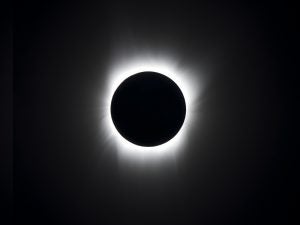City ready to look toward the sky for next week’s eclipse
Published 3:49 pm Tuesday, August 15, 2017
People all across the United States are eagerly awaiting the solar eclipse that will take place August 21. Since the spectacle will be the first to cross the continental U.S. from coast to coast in nearly 100 years, there are some serious safety precautions to be aware of.
Space.com talked to Ralph Chou, a professor of optometry and vision science at the University of Waterloo in Canada, and he said, “Even the tiniest sliver of a crescent sun peeking out from behind the moon emits enough light to scorch your eyes.’”
For this reason, people trying to watch the eclipse need to wear special glasses. The Gilbert H. Gragg Library will be holding a view of the solar eclipse from 2:30-3 p.m. on the library lawn. They will be passing out viewing glasses on a first come first serve basis. They will not allow anyone to pick up the glasses beforehand; they can pick them up upon arrival.
Glasses are also available at the customer service desk at WalMart. The glasses cost $1 and are going quickly. They have approximately 20 glasses left, and do not allow people to pay over the phone.
Luke Brown, director of programming at the library, encouraged everyone to not look at the eclipse for too long and not use any type of viewing glasses that have been scratched or damaged in any way.
Students will not be dismissed early to watch at the library, as the teachers across the district have various activities planned to help use the event as a teachable moment, Tim Cochran said.
Cochran asks that everyone helps the school remind their student that it’s never safe to stare directly into the sun without proper safety glasses, and that is no different during an eclipse. Cochran is hopeful that the experience of an eclipse in our area can be a memorable one.
The eclipse is expected to begin around 1:09 p.m. in our area and end around 4:06 p.m. with an expected peak around 2:41 p.m. The approximate blockage is expected to be around 87% of the sun at the peak of the eclipse.
For more information regarding safety glasses and how to view the solar eclipse safely, visit eclipse2017.nasa.gov.






